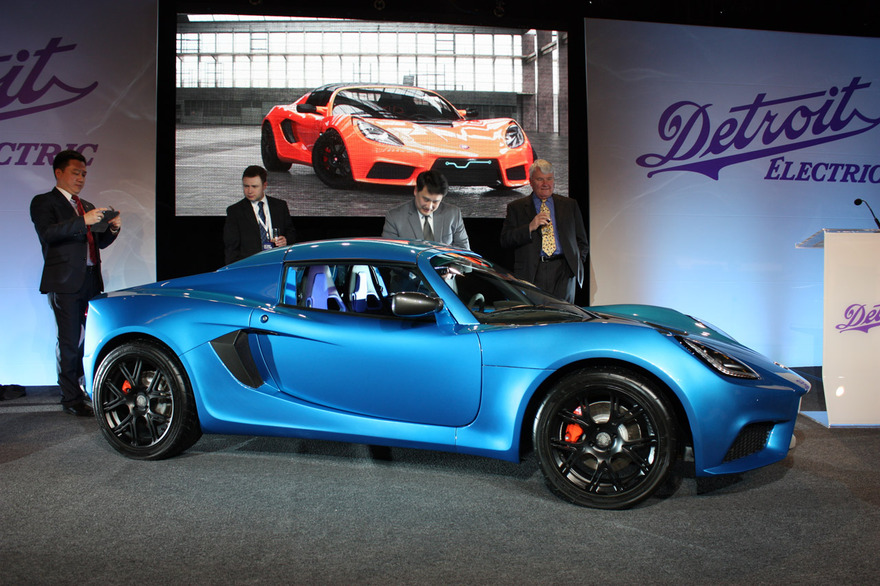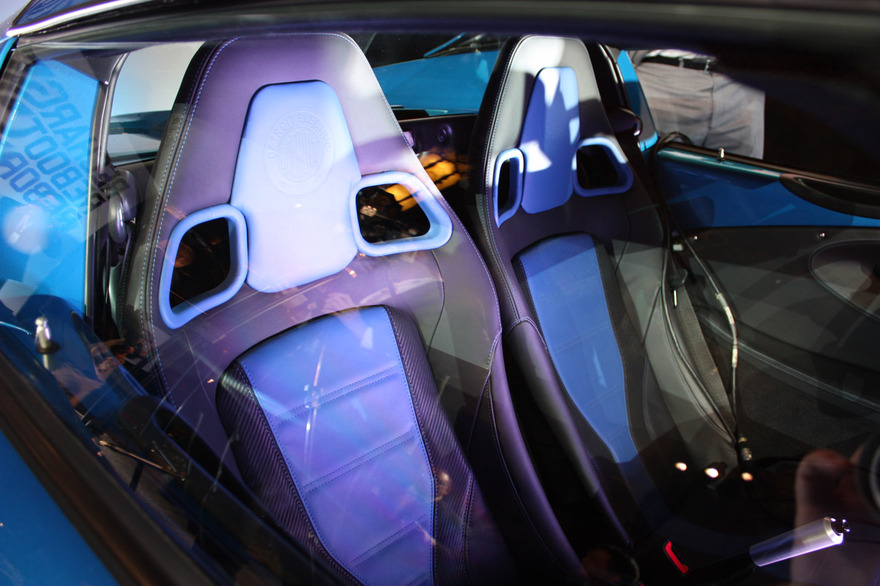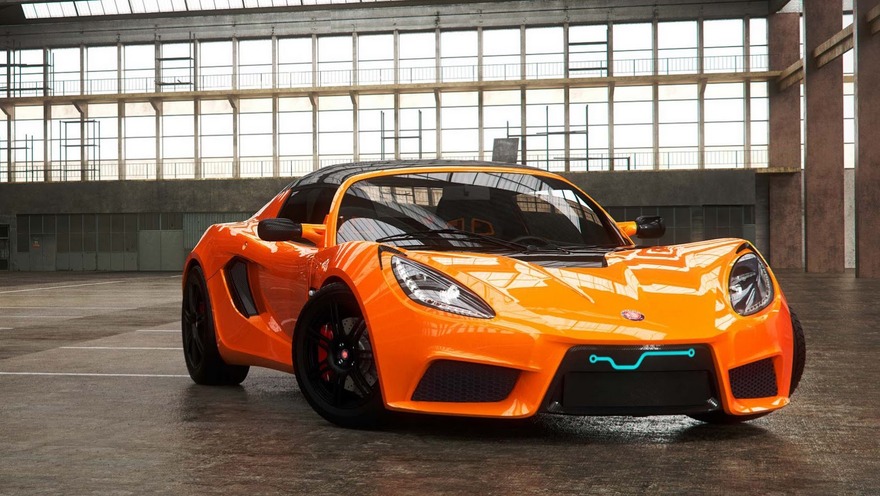Representatives of Detroit Electric claim their project to become the fastest electric vehicle. The SP:01 roadster premiered at the motor show in Detroit more than a year ago and made its official world debut at the Shanghai Auto Show.
Production of this all-electric car was supposed to start at the plant in Michigan; however, it was delayed indefinitely, as the company had not been able to secure an agreement for a manufacturing facility. In the beginning of April 2014, it was reported that Detroit Electric arrived at the decision to launch production of their roadster at a plant in the Netherlands. After many ambages, the first Detroit Electric SP:01 vehicle is expected to hit the production lines in the end of 2014.
HISTORY
The company located in Detroit, Michigan was founded by William C. Anderson in 1884 and till the year of 1911 it was known as the Anderson Carriage Company. In 1907–1939, the cars manufactured by the Anderson Electric Car Company were produced under the Detroit Electric brand.
In 1907, the electric cars were powered by lead acid batteries, and an Edison nickel-iron battery was available starting from 1911. A Detroit Electric could run 130 km on a single charge and was able to accelerate to a top speed of 32 km/h. That was enough for a city ride in the beginning of the 20th century. Significant manual effort was required with early internal combustion engine autos making electric cars extremely popular among women.
The company production was at its peak in the 1910s selling around 1,000 to 2,000 cars a year (due to high petrol prices during the World War I).
In 1920, the company split into two businesses — coachbuilding and production of electric elements — changing its name to «The Detroit Electric Car Company». Prices for the internal combustion engine autos came down making the company’s sales drop. Manufacturing of electric vehicles continued based on a small amount of orders received. The last Detroit Electric car rolled off the production lines in 1939. Overall, the Detroit Electric Car Company produced a record-setting (for the 20th century) number of 13,000 cars powered by electricity.
Among the owners of the Detroit Electric cars one could find Thomas Edison, John D. Rockefeller, and Clara Ford (the wife of Henry Ford).
After 70 years of idle period, the brand was revived thanks to the enthusiasm of the former Lotus CEO Albert Lam and the money of the China-based Youngman Group. In 2008, the joint venture between ZAP electric car company and Youngman Auto resurrected the Detroit Electric brand. The partners wanted to produce a limited range of electric vehicles and launch a 12-metre electric transit bus and two family sedans by 2010. In June 2009, Detroit Electric signed a strategic agreement with the Chinese automaker Dongfeng Motor Corporation to jointly develop electric cars in China. In 2010, they had plans to sell 45,000 of electric vehicles and this number was to be increased to 270,000 units by 2012. In April 2013, the company announced about their plans to produce a limited edition of a two-seat sports car SP:01.
WHAT MAKES IT SO SPECIAL?
The Detroit Electric SP:01 is based on a two-door two-seat Lotus Exige sports car, first introduced in 2000 by Lotus Car. The Exige in its turn is a coupé version of the Lotus Elise, a mid-engine roadster released in 1996.
A two-seat SP:01 roadster is 3,880 mm long, 1,751 mm wide, 1,117 mm high and has a 2,300-mm long wheelbase. The lines of the donor Lotus can be seen in the car’s profile, however, the SP:01 features its own original body: it combines a light carbon fibre bodyshell with an aluminium chassis. That is why the weight of the electric car is around one tonne only — 1,070–1,090 kg depending on additional options. The car also offers an open-top experience. The URT Group, a specialist in manufacturing carbon fibre bodies for sports cars, has developed a bespoke body engineering programme for the Detroit Electric. It features Lotus-derived suspension with retuned springs and dampers. The SP:01 also employs regenerative braking technology, while an AP Racing/Brembo combo setup sees to the braking needs. Sure enough, the car comes with ABS and ESP.
The car still utilizes a mid-engine layout — one motor delivering 203 hp (150 kW) and 225 Nm of torque rests behind the seats. It takes the car just 3.7 seconds to accelerate from 0 to 100 km/h. Its top speed is 250 km/h and it can travel up to 300 km on a single charge. Recharge time is rated at 4.3 to 10.7 hours depending upon charging unit.
The SP:01 sports car is justly considered an eco-friendly vehicle as it produces zero emissions.
UNIQUE CHARACTER
As a rule, electric cars do not really need a transmission as no power is used by the electric motor to run at idle — it just stops. The SP:01 is fitted with a standard transmission — it’s a four-speed manual with the blocked off fifth and sixth gears. There is no need to use the clutch pedal when setting off from standstill or when coming to a halt — it is for gear shifting only. There no need to use the stick too often either, as first and second gears are sufficient for around town. Four gears are designed for better driving dynamics. A five-speed manual and a two-speed automatic will be offered at an extra cost.
The SP:01’s 37-kWh lithium-ion battery pack can be used not only to power the vehicle, but also to turn the car into a power station, which, for instance, can supply a small house with electricity in case it suffers a power failure. The name of this technology is “360 Powerback”, as it can send charge from the batteries back into the house.
The SP:01 has an integrated smartphone that controls all of the car's auxiliary functions. It is located in the car’s centre console. It provides access to navigation, music player, interior lighting, and regenerative braking adjustment. It also displays the level of battery charge and the range to recharge. The owner of the super electric car can take the smartphone out and check the charge status, turn on the climate control system, and monitor the Powerback unit remotely. The name of the system developed in-house by Detroit Electric is the Smartphone Application Managed Infotainment (SAMI).
AMOUNT AND PRICE
Production of the SP:01 model is set for 999 units. The price of the roadster will start at $135,000 (excluding additional options, local taxes, and custom duties). There is no word yet, in which countries the electric car will be sold, however, rumour has it that China will become its biggest market. The price of the SP:01 for the Chinese customers will start at around $200,000. Even though the car is rather expensive, there are 35 potential customers ready to acquire the electric sports car so far.
WARRANTY
Each SP:01 will come with a three-year (48,000 km) warranty. It can be extended to five years and 80,000 km for the battery.
The all-electric car Detroit Electric SP:01 will go on sale in 2015. Apart from the extravagant roadster, the carmaker also plans to develop a practical all-electric sedan in future.













